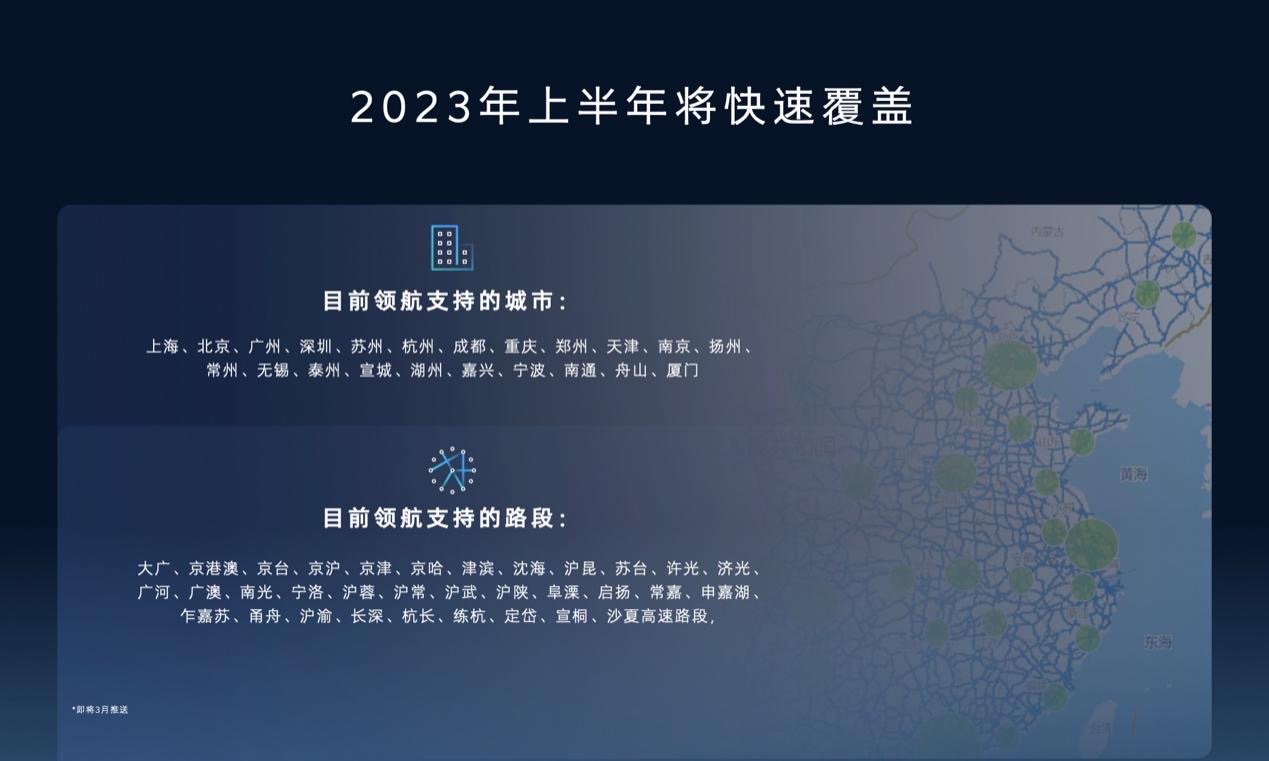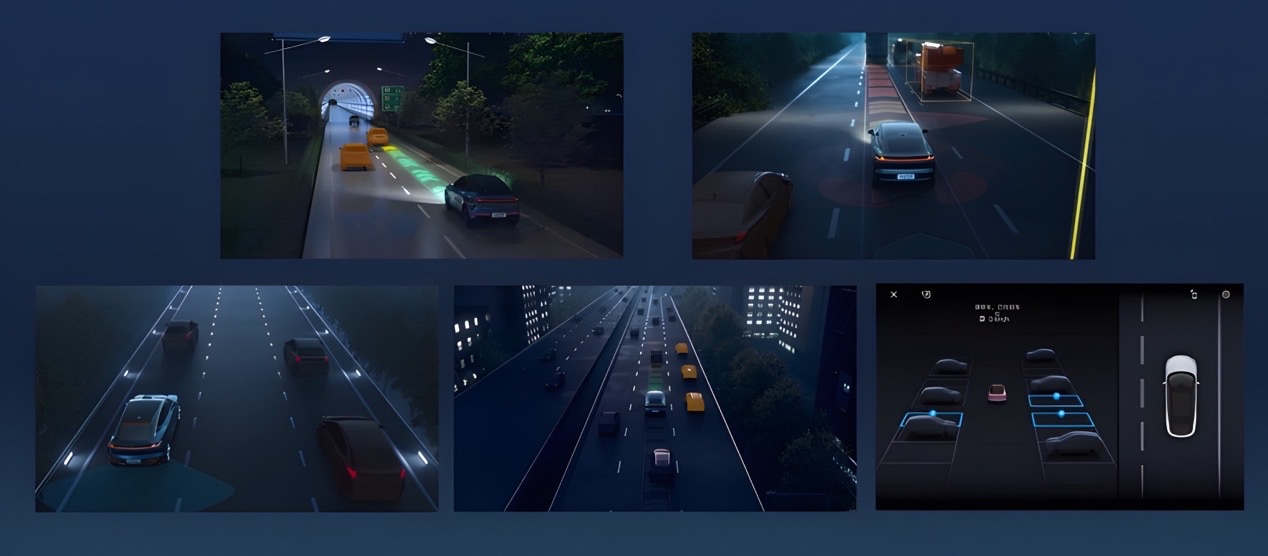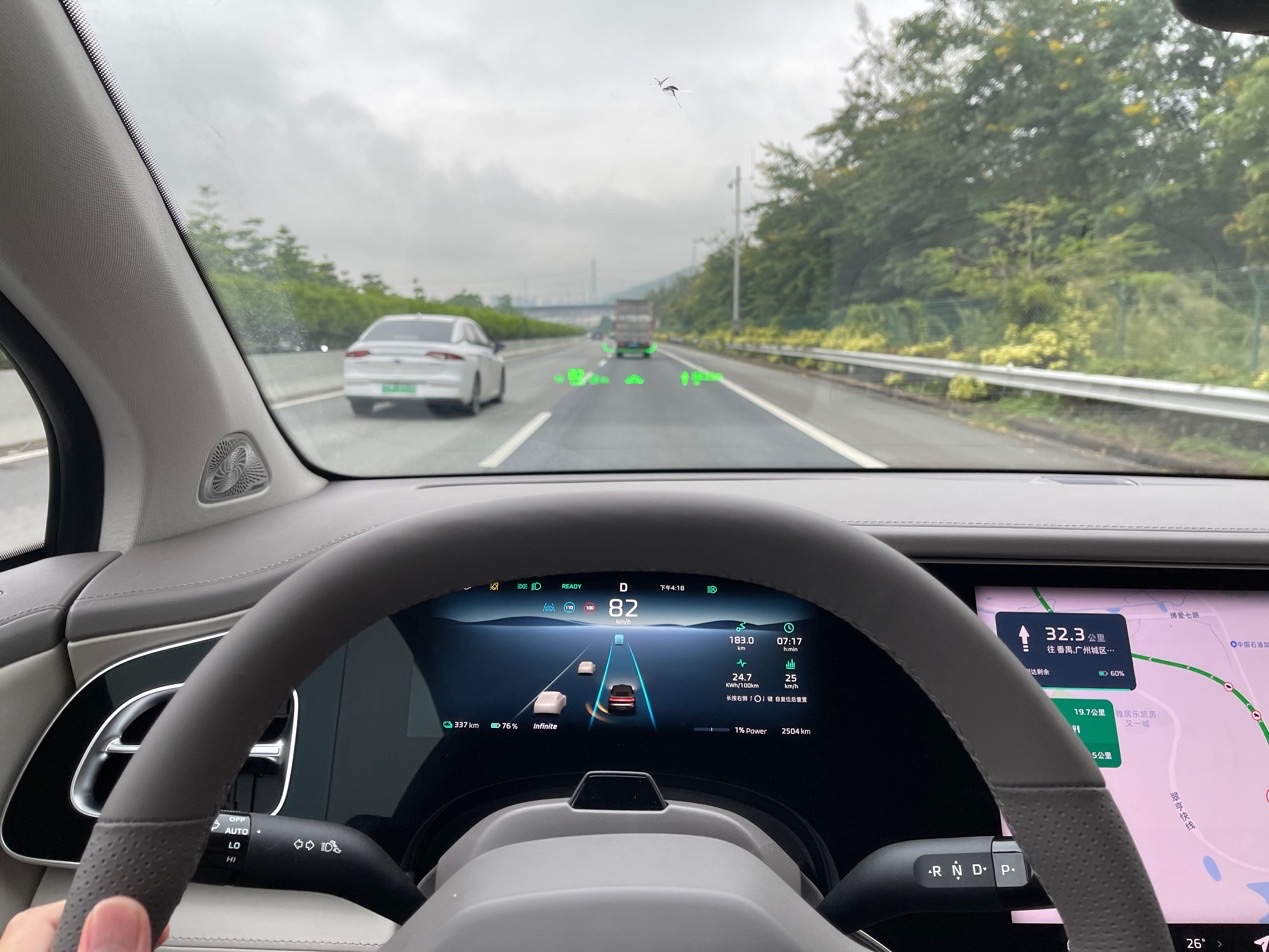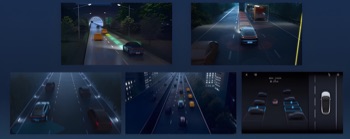This Version Update
It wasn’t until I saw the APP’s special page that I found out about this version update. Adding to that, I was on a business trip for a few days, so it wasn’t until today that I used the latest system. In terms of the page, there were not many changes from the previous version. It still has the same UI and smoothness. Maybe it’s just in my head, but I feel like the application switching has become smoother after the OTA, especially when switching to adjust the air conditioning from the main page.
Now that I’ve finished talking about the “esoteric” sensory experience, let me talk about the most prominent feature – highway navigation.


The high-speed navigation-assisted driving has added support for more cities and roads. I usually drive in Guangzhou, and the route from Guangzhou to Huizhou has added support. Furthermore, Shenzhen now has circular coverage, which is great for me since I often travel between Guangzhou and Shenzhen or Guangzhou and Huizhou. Additionally, it has added “power supplement planning” and “cost accounting” to the navigation route. When going on a long trip, I can just leave the route planning to R7; it’s quite fresh.
First, let’s talk about the experience. I think R7’s high-speed navigation driving ability is quite strong. Take my Tesla Model3, which has the strongest assisted driving ability, as a comparison. Since my wife was driving it at the time, this is a purely subjective experience, and everyone can make a simple reference!


After this update, the warning line for R7’s lane departure warning has turned red, which is more intuitive visually. However, I usually turn off this feature and only enable the lane keeping feature during assisted driving. As for the prompt for automatic lane change, R7 has optimized the display effect. From identifying overtaking, to instrument prompts, to automatic lane change and completion of lane change, the whole process is smoothly connected, without any “hesitation” feeling. It’s almost like the way an experienced driver switches lanes, whereas I cannot perceive the pros and cons of Tesla’s automatic lane change since I did not opt for EAP.
Combining with automatic lane change is the automatic on-off ramp. After entering the ramp, R7 doesn’t immediately slow down to the speed limit like Tesla. Instead, it follows the conventional way of driving, where you can take the turn at a speed of 50 to 60, even though the limit is only at 40. R7 will remain stable at a speed of 45 to 55, which is easier on the body and more in line with our driving logic.
Next, let’s talk about the adaptive cruise control and lane keeping recognition. Because the R7 has a 4D radar in front of it, the recognition efficiency is very high, including the ground markings on the pedestrian crossing and every lane, even the speed bumps that flash by at 100km/h can be recognized. Therefore, the lane keeping ability of the R7 is very strong. Coupled with algorithm optimization, it can basically lock onto the middle of the lane lines steadily, and there will be no back-and-forth corrections when making large turns on high-speed ramps. Tesla’s AP autonomous driving is also famous for its stability. It can achieve twice the result with half the effort with its visual camera and strong algorithm. However, its recognition range is not as comprehensive as that of the R7, and the disadvantage of visual algorithm is that when it rains heavily or fog comes, I need to take over the vehicle at any time.

After talking about the “good” experience, let’s talk about the “shortcomings” in route planning. Currently, whether I am going from Guangzhou to Huizhou or to Shenzhen, there are some gaps in the middle of the route, and it is not continuous. Therefore, I think that when FEIFAN deploys high-speed navigation routes, it should expand from the existing routes instead of segmenting them. It will create a great sense of fragmentation for us when using high-speed navigation, and I hope the next OTA update can connect the gaps. This is the strongest perception I have experienced, and there are many other things for me to share.
This article is a translation by ChatGPT of a Chinese report from 42HOW. If you have any questions about it, please email bd@42how.com.
